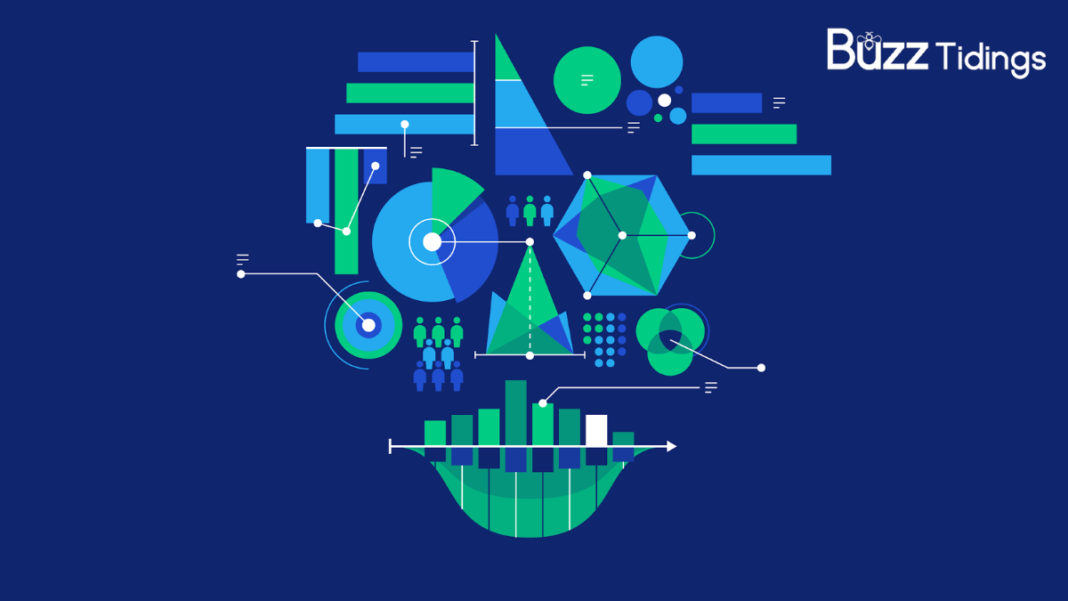How Data Visualisation Drives Business Growth: In the dynamic landscape of the digital era, businesses are grappling with an unprecedented influx of data. However, the mere accumulation of data is insufficient for catalyzing growth; the key lies in extracting actionable insights. This is where data visualization emerges as a game-changer, transforming complex datasets into coherent and comprehensible visuals. In this article, we delve into the profound impact of data visualization on driving business growth and fostering a culture of informed decision-making.
How Data Visualisation Drives Business Growth
Clarity and Understanding: Unveiling the Story Behind the Numbers
At the heart of data visualization is its capacity to simplify intricate datasets, making them accessible to a broader audience. Whether it’s charts, graphs, or interactive dashboards, visual representations distill complex information into intuitive and digestible formats.
Simplifying Complexity: In a world drowning in data, simplicity is a precious commodity. Data visualization tools enable businesses to distill intricate datasets into visual elements that anyone, regardless of their technical background, can comprehend. Through the use of intuitive charts and graphs, organizations can present trends, patterns, and correlations with unprecedented clarity.
Real-Time Insights: The dynamic nature of business requires real-time insights for agile decision-making. Visualization tools offer the ability to monitor Key Performance Indicators (KPIs) in real-time. This immediacy empowers businesses to respond promptly to emerging trends or challenges, fostering a proactive approach rather than a reactive one.
Facilitating Informed Decision-Making: Navigating the Path to Success
Data visualization is not merely about displaying numbers; it’s about extracting meaningful insights that drive informed decision-making.
Trends: Businesses operate in an environment where the ability to identify trends swiftly is a competitive advantage. Visualizations allow stakeholders to identify patterns that might remain hidden in raw data, enabling timely responses to market trends, customer behaviors, and operational efficiency.
Comparative Analysis: Visualization facilitates the comparison of diverse datasets. By visualizing different data points side by side, businesses can easily discern trends, variations, and correlations. This comparative analysis is invaluable for strategic decision-making, aiding in resource allocation and goal-setting.
Read Also: STRATEGIES FOR OVERCOMING COMMON STARTUP PITFALLS
Enhancing Communication: Transforming Data into a Compelling Narrative
The ability to convey insights is as critical as the insights themselves. Visualization transforms data into a compelling narrative, making it an effective tool for communication within and outside the organization.
Storytelling with Data: Numbers alone can be cold and uninviting. Visualization introduces a storytelling element to data, helping businesses weave narratives around their insights. This storytelling approach resonates more profoundly with stakeholders, making data-driven insights more memorable and impactful.
Improved Collaboration: The power of visualization extends to fostering collaboration. When teams across departments have a shared visual reference point, communication becomes more effective. Visualizations provide a common ground for discussions, eliminating misunderstandings and promoting collaborative decision-making.
Optimizing Operations: Unearthing Efficiency and Innovation
Operational efficiency is a cornerstone of sustainable business growth. Data visualization plays a pivotal role in uncovering inefficiencies, streamlining processes, and fostering innovation.
Efficiency Improvements: Through visualizing operational data, businesses can pinpoint bottlenecks and inefficiencies. This insight enables targeted interventions to optimize processes, reduce costs, and enhance overall efficiency.
Predictive Analytics: Advanced visualizations, coupled with predictive analytics, empower businesses to anticipate future trends and potential challenges. This foresight allows proactive planning, risk mitigation, and strategic positioning for future growth.
Customer Insights and Personalization: Connecting with the Heart of the Business
Understanding and catering to customer needs are paramount for sustained business growth. Data visualization provides a lens into customer behavior, preferences, and trends, enabling personalized strategies.
Understanding Customer Behavior: Visualizations empower businesses to decipher customer behavior, preferences, and purchasing patterns. This information is instrumental in tailoring marketing strategies, improving customer experiences, and enhancing overall satisfaction.
Personalized Marketing: Segmentation of the customer base becomes more manageable through visualizations. Businesses can create personalized marketing campaigns, delivering targeted messages and offers. This not only increases customer engagement but also drives growth through heightened sales and improved customer loyalty.
Conclusion:
In the contemporary business landscape, where information overload is a constant challenge, data visualization emerges as a beacon of clarity. It transforms raw data into actionable insights, fostering a culture of informed decision-making, effective communication, and operational excellence. As businesses harness the transformative power of data visualization, they position themselves not just to navigate the complexities of the present but to proactively shape a future marked by sustainable growth and innovation.
Visit Also: www.getngrow.com





